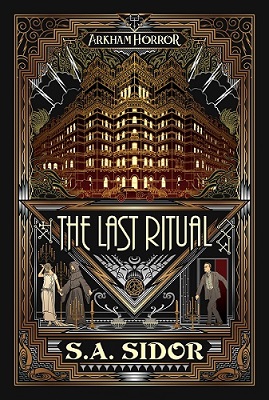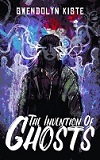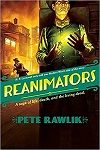The Last Ritual by S.A. Sidor is a perfect tie-in novel for the Arkham Horror Universe. It’s a fun, easy read that will leave you satisfied and ready to move onto your next Aconyte Books release. Each chapter is perfectly paced, with a cliff hanger to pull you into the next section. I highly recommend The Last Ritual for fans of the Arkham Horror games and Lovecraft’s Cthulhu Mythos. I thought I’d offer my summarized thoughts before I opened the gate to my full review. Consider this your last warning, spoilers will appear out of the cosmic abyss below.
 I was initially interested in The Last Ritual for two reasons. First, it was set in the Arkham Horror Universe. Anyone who knows me is aware I’m obsessed with Fantasy Flight’s Arkham Horror games. I most recently discussed my love for these games when I unboxed two recent products in a YouTube video, but I also wrote an essay called The Narrative Appeal of Board Games, which mentions Arkham Horror, a while back. For those new to the Arkham Horror Universe, it started with a single board game based on the Cthulhu Mythos, which later grew tentacles and birthed several other board games, card games, and video games. This isn’t the only tie-in fiction either. There are a few other novels and novellas, and I own a book called The Investigators of Arkham Horror, which details all the characters in the Arkham Horror Universe up to that point. The second thing that interested me about The Last Ritual was the flat-out gorgeous cover created by John Coulthart (pictured to the left). I can’t say enough about how quickly this work of art grabbed my attention, conveyed everything I wanted to know about the tale, and made me want to read this book.
I was initially interested in The Last Ritual for two reasons. First, it was set in the Arkham Horror Universe. Anyone who knows me is aware I’m obsessed with Fantasy Flight’s Arkham Horror games. I most recently discussed my love for these games when I unboxed two recent products in a YouTube video, but I also wrote an essay called The Narrative Appeal of Board Games, which mentions Arkham Horror, a while back. For those new to the Arkham Horror Universe, it started with a single board game based on the Cthulhu Mythos, which later grew tentacles and birthed several other board games, card games, and video games. This isn’t the only tie-in fiction either. There are a few other novels and novellas, and I own a book called The Investigators of Arkham Horror, which details all the characters in the Arkham Horror Universe up to that point. The second thing that interested me about The Last Ritual was the flat-out gorgeous cover created by John Coulthart (pictured to the left). I can’t say enough about how quickly this work of art grabbed my attention, conveyed everything I wanted to know about the tale, and made me want to read this book.
Of course, a good setting and façade aren’t worth much without a solid story inside. Thankfully, S.A. Sidor delivers a fantastic yarn. The narrative follows Alden Oakes, a painter, as he teams with Nina Tarrington, a writer, to investigate a mysterious artist’s commune called the New Colony. The pair suspects the New Colony is behind a series of ritualistic murders taking place around Arkham. A famed surrealist painter named Juan Hugo Balthazarr leads the artist’s commune, and he starts to take an increasingly dangerous liking to both Alden and Nina. The story combines elements of the Cthulhu Mythos with the work of F. Scott Fitzgerald, whose story “The Rich Boy” is quoted in the opening pages of this novel. Fans of the Arkham Horror Universe will be happy to know that Preston Fairmont, Calvin Wright, and Norman Withers make appearances in the prose, and there are also references to Carl Sanford and the Silver Twilight Lodge. The narrative flows beautifully toward its conclusion, which reminded me somewhat of the chilling end to John Carpenter’s Prince of Darkness, but I’ll leave the specifics for you to discover.
Lastly, as a fan and writer, I love finding additional connections between the various works set in the Arkham Horror Universe. I suspect that Juan Hugo Balthazarr mentioned his film director friend, Luis Bunuel, near the end of The Last Ritual to foreshadow the antagonist in Rosemary Jones’s Mask of Silver. To find out if I was right, I plan to buy Mask of Silver, the next book in this new series of Arkham Horror tie-in fiction, immediately.




 All of Snyder’s tales in Halloween Season contain a mix of humor and heart. The collection’s first short story, “Hazelnuts and Yummy Mummies,” is a Halloween twist on Charles Dicken’s A Christmas Carol, and it is a great, heartfelt opener. The story also has several fun references to Hunter S. Thompson’s Fear and Loathing in Las Vegas. “Cosmic Cola,” the following tale, deals with what Stephen King coined “the peculiar little town” trope. Basically, it’s when strangers enter a town where the residents are harboring a monstrous secret. I wrote a paper entitled “Hawthorne and Gorman’s Shadow over Innsmouth,” which touches on the origins of this trope, and I love reading any story that engages with it. I was especially thrilled to see “Cosmic Cola” make direct connections to Lovecraft’s Cthulhu Mythos tale, “The Shadow over Innsmouth.” If that wasn’t enough, in “Cosmic Cola,” one of Halloween’s most sacred traditions, dressing up, saves the protagonist’s life. “Visions of the Dream Witch” and “The Porcupine Boy” also engage with the Cthulhu Mythos, and “The Porcupine Boy” has one of the spookiest moments of the collection near the climax. Lastly, “The Kind Detective” is an impressive yarn because it’s relatively short and still manages to convey an excellent sense of cosmic terror.
All of Snyder’s tales in Halloween Season contain a mix of humor and heart. The collection’s first short story, “Hazelnuts and Yummy Mummies,” is a Halloween twist on Charles Dicken’s A Christmas Carol, and it is a great, heartfelt opener. The story also has several fun references to Hunter S. Thompson’s Fear and Loathing in Las Vegas. “Cosmic Cola,” the following tale, deals with what Stephen King coined “the peculiar little town” trope. Basically, it’s when strangers enter a town where the residents are harboring a monstrous secret. I wrote a paper entitled “Hawthorne and Gorman’s Shadow over Innsmouth,” which touches on the origins of this trope, and I love reading any story that engages with it. I was especially thrilled to see “Cosmic Cola” make direct connections to Lovecraft’s Cthulhu Mythos tale, “The Shadow over Innsmouth.” If that wasn’t enough, in “Cosmic Cola,” one of Halloween’s most sacred traditions, dressing up, saves the protagonist’s life. “Visions of the Dream Witch” and “The Porcupine Boy” also engage with the Cthulhu Mythos, and “The Porcupine Boy” has one of the spookiest moments of the collection near the climax. Lastly, “The Kind Detective” is an impressive yarn because it’s relatively short and still manages to convey an excellent sense of cosmic terror.
 For a while, I’d been thinking, why hasn’t anyone done a story that pulls together a bunch of Lovecraft’s connected mythos into a singular tale? Well, I had somehow foolishly missed out on Reanimators existence until recently. The novel weaves the tale of Dr. Stuart Hartwell, a contemporary of Herbert West, as he moves through the years in and around Arkham. In the narrative, Hartwell encounters several of Lovecraft’s most famous characters and even intersects with several of Lovecraft’s best tales. This was a ton of fun to read, and I can’t wait to dive into the sequel. Maybe one day I’ll do a post trying to diagram out all the references and Easter eggs. Indiana Jones even pops up in the text.
For a while, I’d been thinking, why hasn’t anyone done a story that pulls together a bunch of Lovecraft’s connected mythos into a singular tale? Well, I had somehow foolishly missed out on Reanimators existence until recently. The novel weaves the tale of Dr. Stuart Hartwell, a contemporary of Herbert West, as he moves through the years in and around Arkham. In the narrative, Hartwell encounters several of Lovecraft’s most famous characters and even intersects with several of Lovecraft’s best tales. This was a ton of fun to read, and I can’t wait to dive into the sequel. Maybe one day I’ll do a post trying to diagram out all the references and Easter eggs. Indiana Jones even pops up in the text. Silver Bullet is one of my favorite horror films of all time. A big part of why I love this movie so much is tied to the fact that I saw it at a young age, but I also think it’s a brilliant gem. The way the movie builds dread as it slowly progresses toward the climax, the excellent performances, and the way the werewolf’s killings impact the small town of Tarker’s Mill combine to make Silver Bullet special. So, it was only a matter of time until I read Cycle of the Werewolf. While I enjoyed the novella, I felt the story worked better as a screenplay. The close bonds between Marty and his sister, and Marty and his uncle, weren’t present in Cycle of the Werewolf, and they’re a major reason why I love Silver Bullet. The story felt hollow without them. Although, the movie didn’t have the stellar art by Bernie Wrightson.
Silver Bullet is one of my favorite horror films of all time. A big part of why I love this movie so much is tied to the fact that I saw it at a young age, but I also think it’s a brilliant gem. The way the movie builds dread as it slowly progresses toward the climax, the excellent performances, and the way the werewolf’s killings impact the small town of Tarker’s Mill combine to make Silver Bullet special. So, it was only a matter of time until I read Cycle of the Werewolf. While I enjoyed the novella, I felt the story worked better as a screenplay. The close bonds between Marty and his sister, and Marty and his uncle, weren’t present in Cycle of the Werewolf, and they’re a major reason why I love Silver Bullet. The story felt hollow without them. Although, the movie didn’t have the stellar art by Bernie Wrightson.




